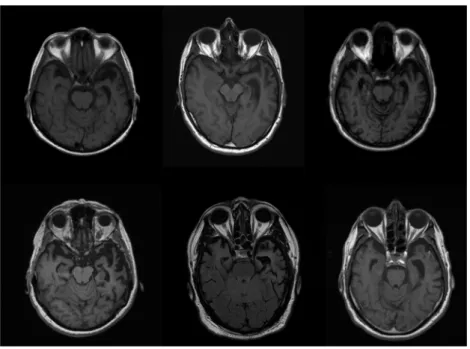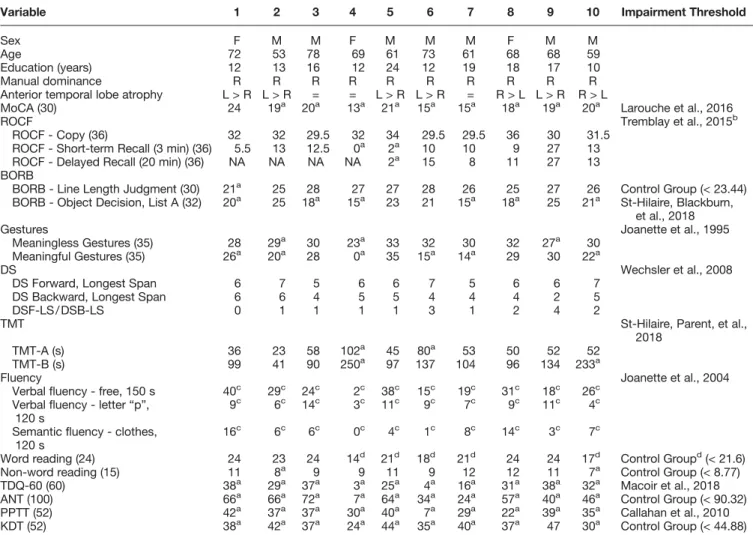The Nonverbal Processing of Actions Is an Area of Relative Strength in the Semantic Variant of Primary Progressive Aphasia
Texte intégral
Figure




Documents relatifs
Pour comprendre de manière approfondie la notion d’orientation client du vendeur du point de vue des consommateurs, nous avons eu recours à la méthode
The block turbo codes (product codes) are decoded using an iterative decoding algorithm (block turbo decoder) [SI based on soft decoding and a soft decision of the
Here we focus on the effect of a larger prey (bison), and we show that the same model serves to illustrate that more dangerous prey allow a greater number of wolves to participate
The MCSM calculations, performed in a very large model space, describe the ground state of 98 Zr as spherical, while the deformed low-lying 0 þ 2 state is predicted as a
Since inversion decreases FFA selectivity for face variations (Mazard et al., 2006; Gilaie-Dotan et al., 2010), we expected inversion to eliminate or largely reduce releases
arabiensis response to both human parasites, keeping in mind that the mosquito genotype (multiple F0 individuals) was not fixed. We identified 3 classes of transcripts:
In this paper we proposed a maximum likelihood approach for Hawkes processes that can handle both self-exciting and self-regulating scenarii, the first case be- ing already covered
